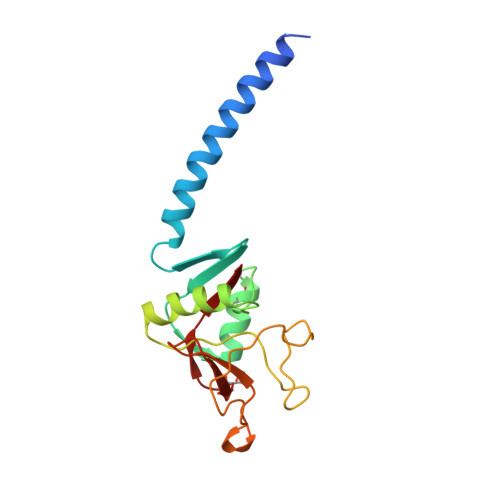Crystal structure of the trimeric alpha-helical coiled-coil and the three lectin domains of human lung surfactant protein D.
Hakansson, K., Lim, N.K., Hoppe, H.J., Reid, K.B.(1999) Structure 7: 255-264
- PubMed: 10368295
- DOI: https://doi.org/10.1016/s0969-2126(99)80036-7
- Primary Citation of Related Structures:
1B08 - PubMed Abstract:
Human lung surfactant protein D (hSP-D) belongs to the collectin family of C-type lectins and participates in the innate immune surveillance against microorganisms in the lung through recognition of carbohydrate ligands present on the surface of pathogens. The involvement of this protein in innate immunity and the allergic response make it the subject of much interest. We have determined the crystal structure of a trimeric fragment of hSP-D at 2.3 A resolution. The structure comprises an alpha-helical coiled-coil and three carbohydrate-recognition domains (CRDs). An interesting deviation from symmetry was found in the projection of a single tyrosine sidechain into the centre of the coiled-coil; the asymmetry of this residue influences the orientation of one of the adjacent CRDs. The cleft between the three CRDs presents a large positively charged surface. The fold of the CRD of hSP-D is similar to that of the mannan-binding protein (MBP), but its orientation relative to the alpha-helical coiled-coil region differs somewhat to that seen in the MBP structure. The novel central packing of the tyrosine sidechain within the coiled-coil and the resulting asymmetric orientation of the CRDs has unexpected functional implications. The positively charged surface might facilitate binding to negatively charged structures, such as lipopolysaccharides.
Organizational Affiliation:
Department of Microbiology, University of Illinois at Urbana-Champaign, B103 CLSL, 601 South Goodwin Avenue, Urbana, IL 61801, USA. [email protected]















